Verbena Buenos Aires and its cultivation
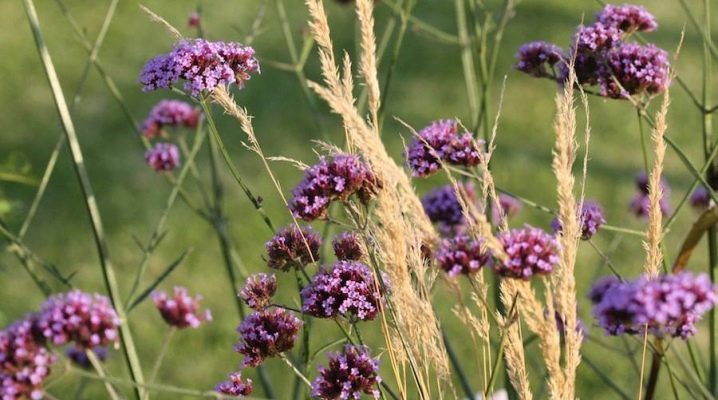
Among more than 250 species of vervain, the Buenos Aires verbena occupies a special position. Its excellent appearance and ease of cultivation have brought it high popularity in flower gardens. Photos are unable to convey either its shade or airiness. The plant is very fond of landscape designers - it is atmospheric and bright.
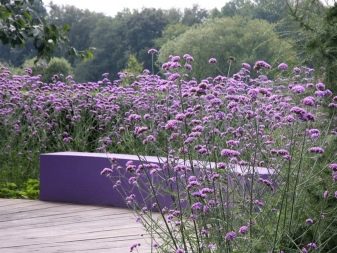

general description
Perennial verbena Buenos Aires is an ornamental herb up to 120 cm tall.
Another name is Bonar, from lat. Verbena bonariensis. And also this verbena is called Argentinean - it really comes from South America. Other names: tall or beautiful, because it is taller than hybrid verbena, which has bushes up to 45 cm.
Bonar verbena bears little resemblance to hybrid.
Stems are straight, bright green, faceted, rough to the touch, branching. The leaves are small, opposite, narrow, elongated, serrated, spear-like, collected mainly at the base, rarely located on the stems. In mass plantings, the leaves are invisible, juicy, strong stems are striking.
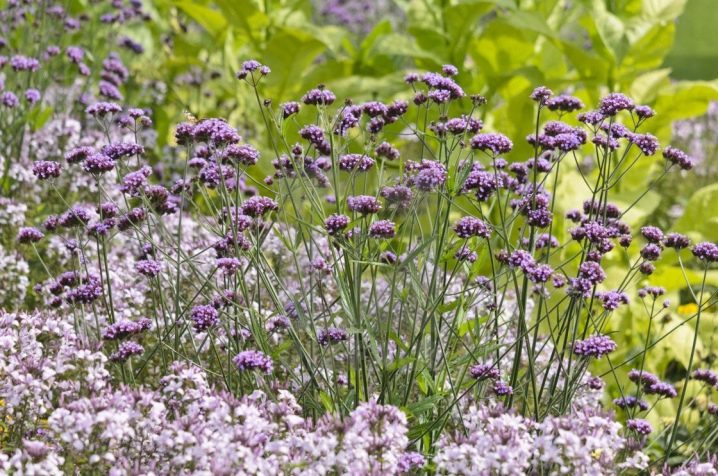
The plant is valued for its delicate amethyst flowers. The flowers are small, they are tubules with 5 bent petals. They are collected in small spikelets, resembling lumps, and spikelets - in abundant umbrellas. The diameter of the umbrella is up to 5 cm, but they are numerous.
Blooms from late June until frost. In the second half of September, the seeds ripen. The stems, directed upward and bearing bright purple heads, look almost cosmic. The flowers are very attractive to butterflies and bees. Flowers stand perfectly in cut.
The flower as a garden flower was first grown by the British, William and James Sherard, who received the seeds from Buenos Aires. The plant is prized in the UK, even receiving an award from the Royal Horticultural Society as a flower of outstanding horticultural merit. Its flowers were found to be very attractive and "laconic".
In hardiness zones from 7 to 11, the plant is grown as a perennial, in cooler climates - as an annual. In arid and hot regions, the flower can become invasive. It is considered a weed plant in some states of America, Australia, South Africa.
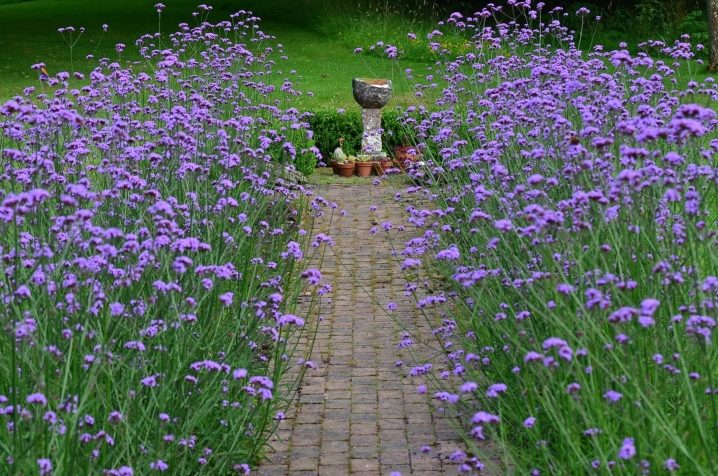
Popular varieties
In the Russian Federation, Bonar vervain is represented by grade "Lilac rain", whose seeds are actively sold. This is a tall openwork plant branching from the base. Peduncles are long, strong. Flowers are small, purple. The manufacturer recommends growing the flower as an annual - it hibernates poorly in the conditions of the Russian Federation. Moreover, this verbena is cold-resistant, that is, it can decorate a flower garden until late autumn.
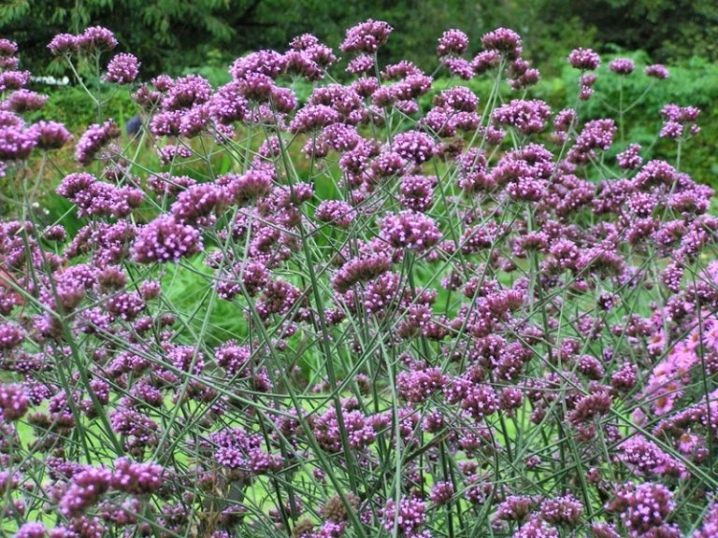
In the west, a variety is also actively grown Lollipop - a short version of the same plant. Its maximum height is 60 cm. Verbena Buenos Aires Lollipop looks good in containers, on alpine slides, in small gardens and borders.
It is combined with succulent low-growing plants such as the cuff.
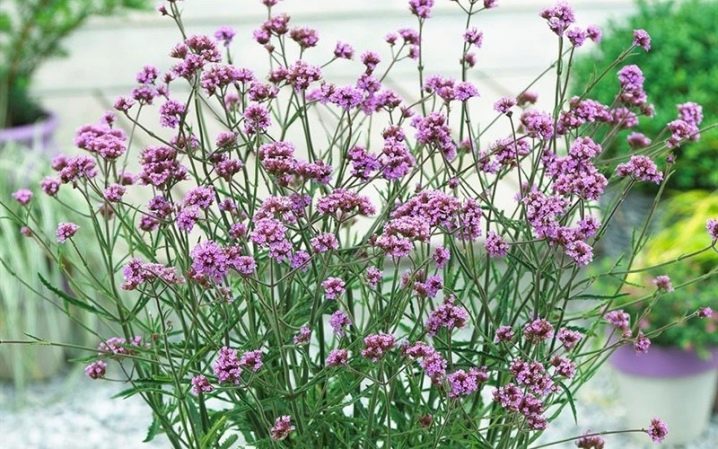
Landing
He grows Verbena Bonar by sowing seeds for seedlings.
Seeds are sown in March-April. Soak in water for 2 hours, you can use growth stimulants. Then stratification is needed - it will accelerate germination. Seeds are wrapped in damp gauze and kept in a refrigerator for 3-4 days at a temperature of + 4 ... 6 ° C.
Lack of stratification is the main mistake of beginners. It is also important to sprinkle the seeds with a thin layer of soil, they germinate in the dark. Seedlings appear unevenly.
After stratification, the seeds will appear in 15-20 days. They wait until the seedlings release real leaves, and dive into a separate container.
For better branching, pinch over 5 leaves, if you want to get lush bushes. If you need a clearer vertical, you can do without pinching.
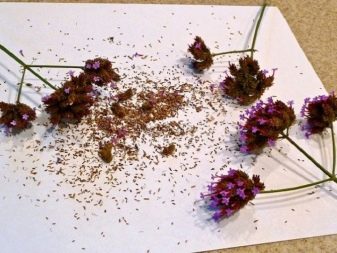
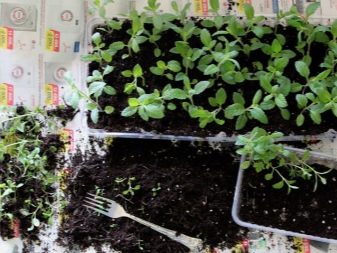
Seedlings are periodically hardened by bringing them to fresh air.
For verbena, choose a sunny, wind-protected place with well-drained soil. The plant does not like moisture stagnation.
The soil for planting is loose, moderately fertile, non-acidic (liming is carried out on acidic ones). Too oily soils are best avoided.
Landing in open ground - mid-May. The distance between the plants is 20-25 cm. When planting, they dig holes, pour a liter of water there, wait for the moisture to be partially absorbed. The roots of the plant are dipped in the resulting gruel and sprinkled with dry earth.
The flower grows quickly, flowers appear in June.
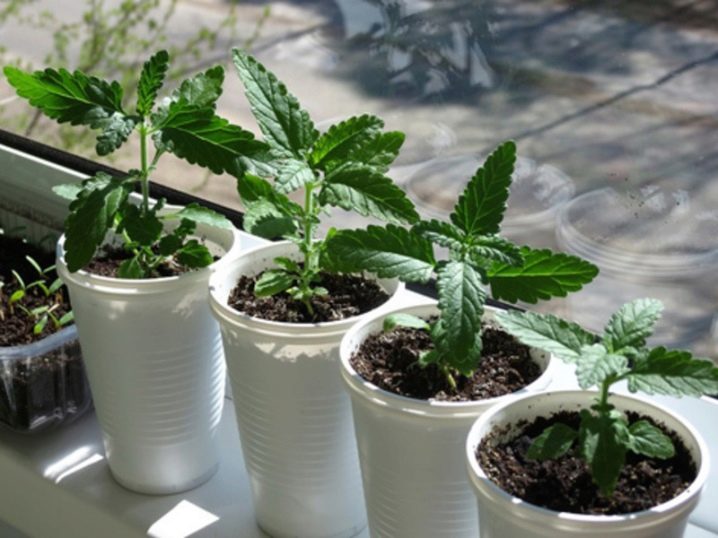
Growing care
Verbena is quite unpretentious, can grow in partial shade, tolerates irrigation interruptions, does not require fertilization, but the plant will be more lively and lush with good care. In nature, Bonar verbena is universal - it grows along the banks of rivers or lakes, on the edges, while enduring a hot, contrasting climate.
Watering and feeding
Immediately after planting, the flower is watered daily.
After 2 weeks, water it sparingly, only when the topsoil dries up. The flower is very resistant to drought, but you should not allow the soil to dry out completely.
Verbena is not too demanding on feeding, but once a month it is useful to apply complex mineral fertilizers for flowering plants. An excess of nitrogen should be avoided - the verbena will begin to fatten, there will be few flowers. The plant is sensitive to a lack of iron, so it will be useful to spray the flower with iron chelate once a season.
Fresh organic matter cannot be used as fertilizer.

Loosening, weeding, mulching
Weeding and loosening as needed. Mulching during the growing season is necessary only if it is not possible to water on time, and the weather is dry.
The tops of the plants need to be pinched - so the bushes will be even more lush and airy.
Dry inflorescences are regularly removed, this makes the flower garden more tidy, and the flowering more lush.
Despite the high stems, the flower does not need support.... The stems are tough and sturdy, even capable of supporting other plants.

Wintering
Verbena Buenos Aires belongs to moderately winter-hardy plants, without shelter it can tolerate frosts down to -5 ° С. It is recommended not to prune it for the winter, so as not to disturb the plant, but to postpone pruning until spring, when new shoots are visible at the base.
For the winter, the plant must be mulched with a thick layer of dry bulk materials: needles, spruce branches, straw, sawdust, burning leaves, humus, sometimes gardeners use pea tops.
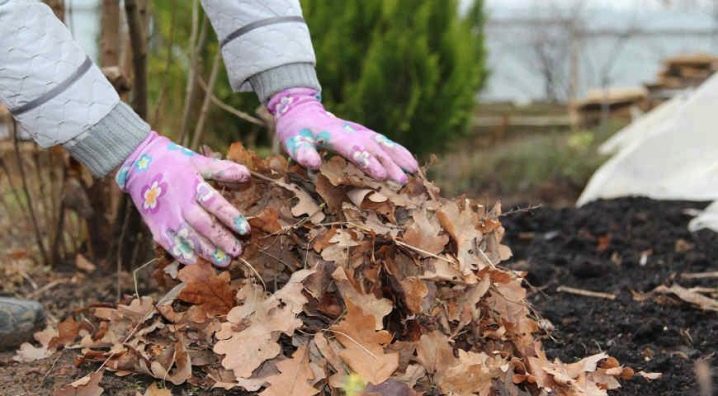
Reproduction
In late summer - early autumn, the plant reproduces well with stem cuttings. The stems are cut, put in water.
It can be propagated by layering - it is enough to select suitable stems and fix them to the ground. In places of contact, roots will appear rather quickly. Young plants are separated from the mother plant. Thanks to this ability, in nature, the species grows well in breadth, forming clumps or even fields.
If there is a desire to get more hardy plants, verbena seeds are sown in the ground in the fall, in the spring there will be strong small plants that will bloom by the end of summer.
The plant actively reproduces by self-seeding. Young plants tolerate transplanting to a new place well.
Growing a flower from seeds in a seedling way does not require special skills, the seeds are easily accepted, germinate quickly.

Diseases and pests
The plant is attractive to bees, but almost uninteresting to pests.Very rarely can be affected by ticks or aphids, the bushes are treated Fitoverm.
In very dry weather, it can be affected by powdery mildew, but for this it is necessary that there is dryness all summer and there is no watering. If a whitish bloom is seen on the leaves, they are sprayed ash solution, "Fundazol" or "Fitosporin".
In dense, heavy soil during damp summers, the roots and stems of the plant can suffer from rot. In this case, it is better to transplant the plants to a drier place with well-drained soil, keeping in a solution of potassium permanganate, or to root healthy cuttings.
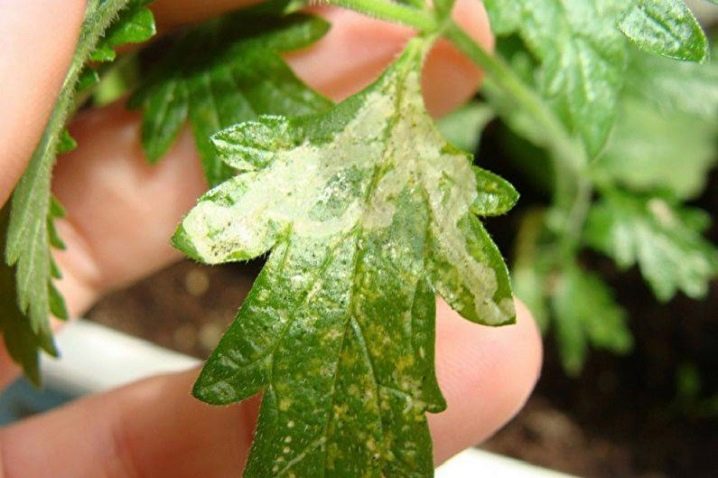
Use in landscape design
The flower looks elegant, it is called architectural. In the application, Buenos Aires verbena is universal, decorates any flower garden in style.
Landing methods are not limited by anything. It can be single plants, rare plantings, dense clumps. In the latter case, verbena successfully plays the role of a dominant. In rare or single plantings, this is an excellent background plant, shading a variety of flowers with lilac openwork. Any ornamental plants with large flowers against the background of verbena look great. The range of colors is also unlimited.

What can be combined with verbena.
-
With contrasting colors in orange, red, yellow tones. Against the background of verbena, knifofia, decorative dwarf sunflowers, rudbeckia, juicy snapdragon flowers, dahlias, and uncompromisingly bright amaranth look grandiose.
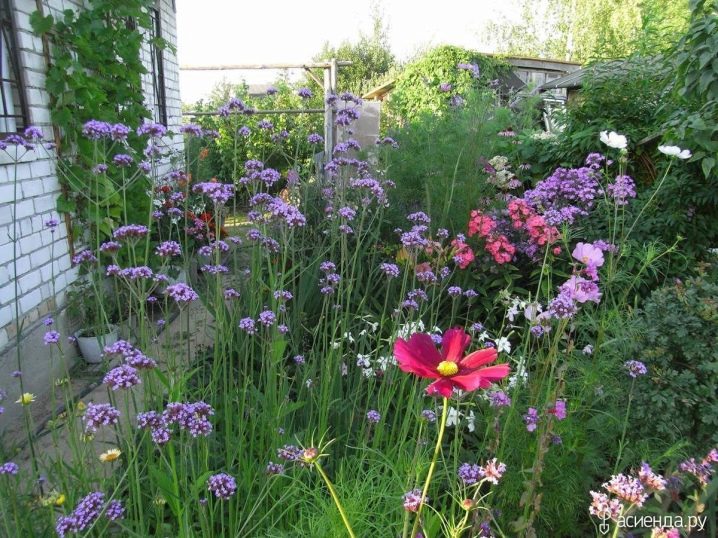
- With plants in close lilac-lilac tones, achieving a watercolor play of colors. For example, with American asters (symphiotrichums), salvia of violet-blue varieties, Perovskaya, agapanthus.
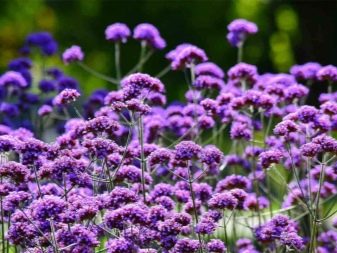
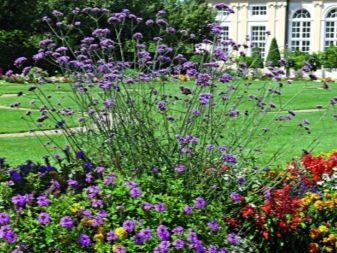
Verbena is especially good in irregular gardens, in multicomponent borders with other airy flowers, grasses and herbs: yarrows, peaches, moths, miscanthuses, pennisetums, with silvery astelia or dark purple ophiopogon - the last two plants in Russia are grown in room culture. Looks magical next to apple-tender gaura, hakonehloa.
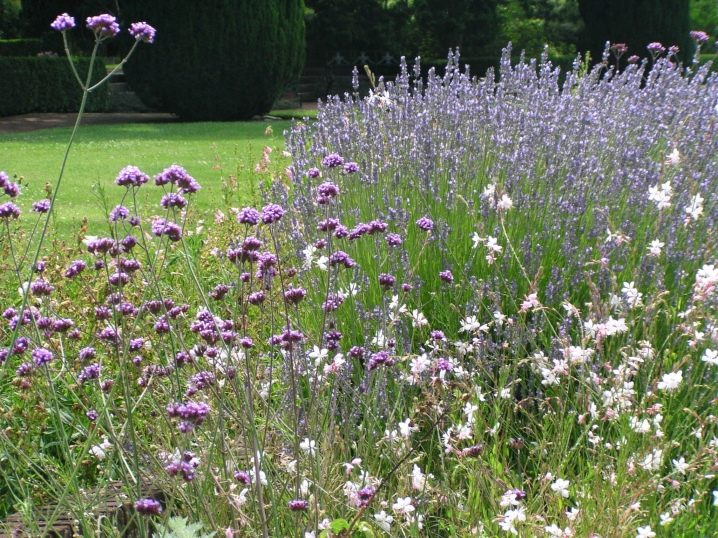
Verbena will delight lovers of Japanese style, classic English garden. This is a plastic, mood plant. It will make an original composition with bronze New Zealand sedges, with woolly stachis, with any plants of complex shades: with silvery, gray, ash foliage. It will emphasize the beauty of bright pink lychnis, cleoma, decorative bows, large-flowered lilies.
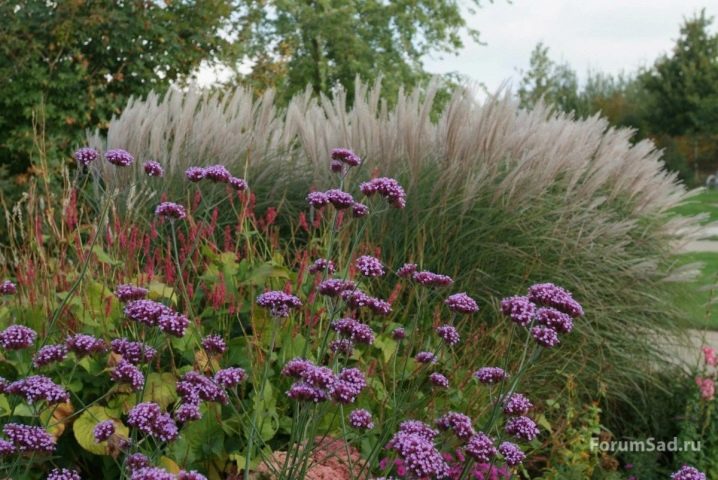
Interest in vervain has greatly increased in recent years, when free creativity and search have become fashionable. This open transparent plant can be used in any part of the garden without worrying about the quality of the composition. Verbena will smooth out any mistakes.
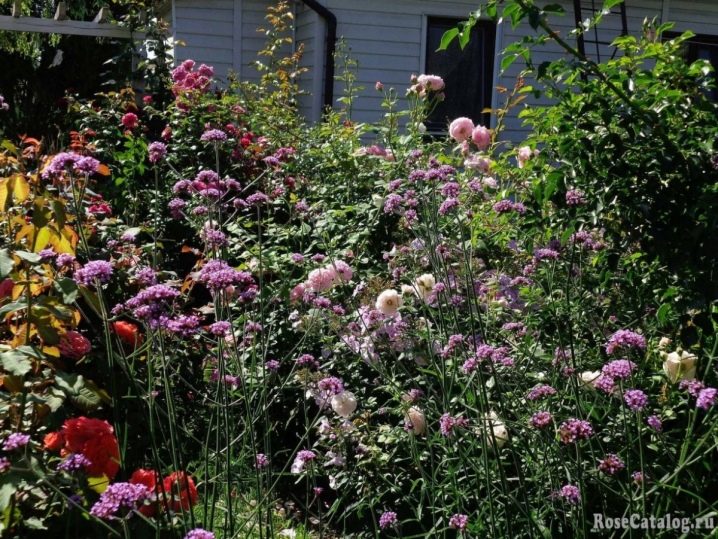







































































































The comment was sent successfully.